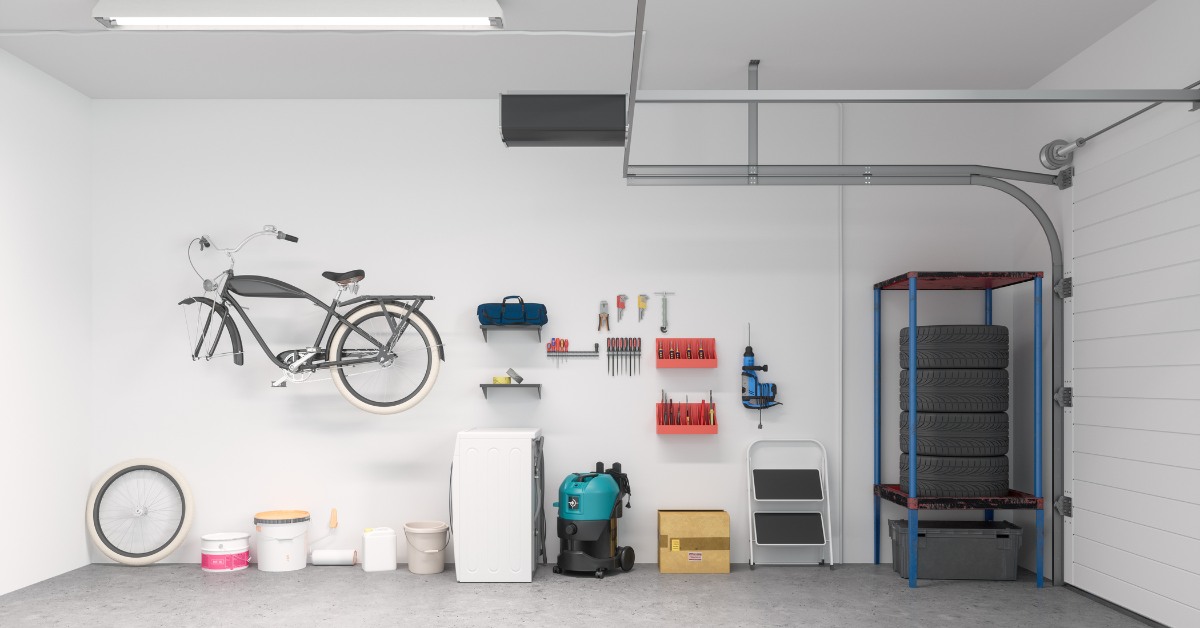How to Cool a Garage with No Windows
Everyone values a comfortable space. Whether it’s your living room, bedroom, or garage, the right temperature can make a difference. However, cooling a garage without windows presents unique challenges. How do you keep it comfortable without the natural ventilation that windows provide?
Before diving into cooling solutions, it’s crucial to understand why garages heat up in the first place. Many factors contribute to this:
- Equipment: Machinery, tools, and even vehicles radiate heat, especially after use.
- Poor Insulation: Many garages need to be built with temperature control in mind. Without proper insulation, they quickly become hotspots.
- Sunlight: A garage’s location can make it susceptible to prolonged sunlight, increasing its internal temperature.
Beyond discomfort, a hot garage can damage items stored inside, especially if they’re heat-sensitive. Moreover, it can pose safety risks, especially when dealing with flammable materials.
Temporary Options for Cooling Your Garage
If you’re seeking immediate relief, several temporary solutions can make a noticeable difference:
- Portable Air Conditioners: These devices can be lifesavers. Unlike fixed AC systems, portable ones can be moved to target specific areas. Their main advantage is that they don’t require complex installations. However, note that they might be less energy-efficient than traditional air conditioners.
- Fans: Never underestimate a good fan. Whether it’s an oscillating fan or an industrial floor model, fans circulate air, leading to a perceived drop in temperature. For a garage without windows, using a fan in combination with occasionally opening the garage door can enhance air circulation.
- Ventilation: While your garage doesn’t have windows, it likely has a door. Propping it open, even slightly, can introduce fresh air and aid circulation. Additionally, if your garage has vents, ensure they’re unobstructed.
- Cooling Towels and Personal Coolers: These are great for working in the garage. Drape a cooling towel around your neck, and you’ll be amazed at its immediate comfort.
Permanent Solutions for Long-term Comfort
If you’re looking for more lasting solutions, several methods can transform your garage into a consistently cooler space:
- Insulation: The insulation acts as a barrier, reducing heat transfer from outside. Wall, ceiling, and even floor insulation can play pivotal roles in maintaining a comfortable garage temperature. There are different types, like fiberglass and foam, so research to find which best suits your needs.
- Installing an Air Conditioning System: Introducing an air conditioning system is a more robust solution. It’s pricier and requires professional installation, but the results are worth it. Split AC units or ductless systems can be especially effective for garages.
- Cool Roofing Materials: A lot of heat can come from a garage’s roof. Reflective roofing materials can bounce sunlight away, reducing the heat absorbed.
- Upgrade the Garage Door: Modern garage doors come with insulation properties. Reflective or insulated doors can dramatically reduce heat intake.
- Passive Cooling Techniques: Think outside the box— or, in this case, outside the garage. Planting shade trees or installing awnings can shield your garage from direct sunlight, leading to a natural cooling effect.



Maintaining a cool garage often hinges on small, everyday habits that can significantly affect the space’s temperature. One straightforward yet impactful strategy revolves around your vehicle. After a drive, cars retain a considerable amount of heat. Allowing them to cool outside before parking in the garage can prevent this trapped warmth from raising the internal temperature.
Another key consideration is the equipment you use. Tools and machinery, especially those used intensively, generate heat. Before storing them back in the garage, give them ample time to cool off. This can prevent the gradual build-up of warmth over time, ensuring the space remains comfortable.
Lastly, always be mindful of your power usage. All tools and machines should be turned off when not actively in use. Some devices, even in standby mode, can produce heat, subtly increasing the garage’s temperature. Being diligent about powering down can help maintain a consistently cooler environment.
While DIY solutions can be effective, sometimes the best approach is to call in the experts. An HVAC professional can assess your garage’s needs and provide tailored solutions. This might involve an upfront cost, but the long-term benefits of comfort and energy savings can be considerable. When seeking an expert, always check their credentials, read reviews, and compare quotes to ensure you get the best service for your budget.
Conclusion
A garage without windows doesn’t have to feel like a sauna. With the right strategies, it can be just as comfortable as any other room in your home. While temporary measures offer quick relief, considering permanent solutions will provide long-lasting comfort. Assess your specific needs, and soon, you’ll turn your garage into a cool haven.

